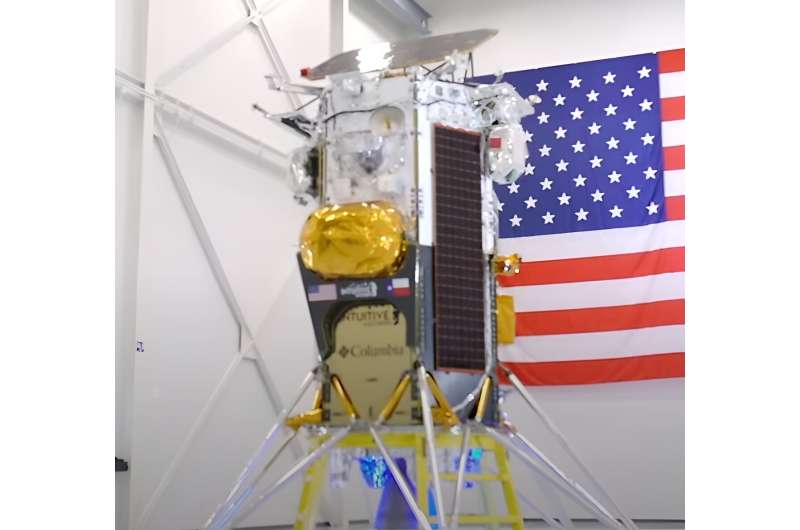Credit: NASA's Goddard Space Flight Center
In February 2024, Intuitive Machines' IM-1 mission will launch to the moon's South Polar region, as part of NASA's Commercial Lunar Payload Services (CLPS) initiative. This mission is part of the CLPS ongoing effort to bring down the cost for science investigations and technology demonstrations going to the moon and to make them more routine in the lead-up to the Artemis landings later this decade.
Among the NASA-provided research flying aboard IM-1 will be an instrument designed to observe the moon's surface environment in radio frequencies, to determine how natural and human-generated activity near the surface interacts with and could interfere with science conducted there.
The instrument is called the Radio wave Observation at the Lunar Surface of the photo-Electron Sheath (ROLSES) and is designed to study the dynamic radio energy environment near the lunar surface. It will launch aboard Intuitive Machines' Nova-C lander.
The ROLSES instrument project is headed up by Dr. Natchimuthuk "Nat" Gopalswamy of NASA's Goddard Space Flight Center in Greenbelt, Maryland. Gopalswamy describes the design of ROLSES as being a very simple system.
"We have four antennas which observe whatever radio emissions are present on the moon [radio emissions are a type of light, or electromagnetic radiation, which have the longest wavelength, or distance between peaks in their energy waves]," said Gopalswamy. "These antennas are very long, about 8 feet (2.5 meters). But for launching they are packed into a small canister, about 8 inches (21 centimeters) in size."
In February 2024, Intuitive Machines’ IM-1 mission will launch to the Moon’s South Pole as part of NASA’s Commercial Lunar Payload Services initiative. Among the NASA provided payloads will be an instrument called the Radio wave Observation at the Lunar Surface of the photo-Electron Sheath (ROLSES) designed to observe the Moon’s surface environment in radio frequencies, to determine how natural and human-generated activity near the surface interacts with and could interfere with science conducted there. Credit: NASA’s Goddard Space Flight Center/Scientific Visualization Studio James Tralie (ADNET Systems, Inc.). Lead Producer Natchimuthuk Gopalswamy (NASA/GSFC).
The main purpose of ROLSES will be to account for the variety of radiation generated by cosmic phenomena, as well as by human activity on Earth. "There are varying sorts of radio emissions," said Gopalswamy. "These include activity on Earth that produces radio interference at the lunar surface. And then we have natural radio emissions, coming from Jupiter, coming from the sun, even coming from our Milky Way galaxy. There is even an emission from Earth that is associated with the aurora."
The trick, as Gopalswamy points out, is that each of these types of radio noise produces its own dynamic spectral pattern, somewhat similar to the way in which fingerprints are unique for each person.
"The spectrum of each event looks different from the others," he said. "Therefore, it's easy for us to identify which is coming from Jupiter, or from the aun, or from the galaxy, which is very low-frequency background radiation."
Another source of radio interference will be the lunar lander itself.
"Landers obviously have mechanisms, motors and things; they all will produce some kind of radio emission, and that will also be recorded in the spectrum," said Gopalswamy. "And those will produce distinct features which show that there is interference going on at this particular location."
By identifying this type of interference, scientists can work to sift through the noise it creates when analyzing data returned by instruments like ROLSES. That way, they can hone in on real data, and not "noise" created by non-natural processes.
The four ROLSES antennas are also mounted at two different heights, meaning that once they begin taking measurements, they can provide information on variations in the cloud of negatively charged electrons blasted from the lunar surface by sunlight, and how it changes between different heights.
"This way, we can measure the electrons' density based upon distance from the surface," said Gopalswamy. "Then we can see how the number of electrons decreases as you go farther from the surface."
Provided by NASA's Goddard Space Flight Center























